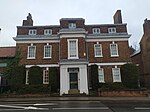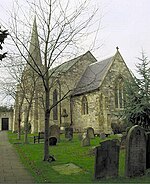York High School, York
2007 establishments in EnglandAcademies in YorkAcomb, North YorkshireEducational institutions established in 2007Secondary schools in York ... and 1 more
Use British English from December 2016

York High School is a mixed secondary school in York, North Yorkshire, England. It has a comprehensive admissions policy, and in 2016 had an enrolment of 757 pupils ages 11–16.
Excerpt from the Wikipedia article York High School, York (License: CC BY-SA 3.0, Authors, Images).York High School, York
Cornlands Road, York Acomb
Geographical coordinates (GPS) Address Phone number Website External links Nearby Places Show on map
Geographical coordinates (GPS)
| Latitude | Longitude |
|---|---|
| N 53.948579 ° | E -1.129237 ° |
Address
York High School
Cornlands Road
YO24 3WZ York, Acomb
England, United Kingdom
Open on Google Maps










